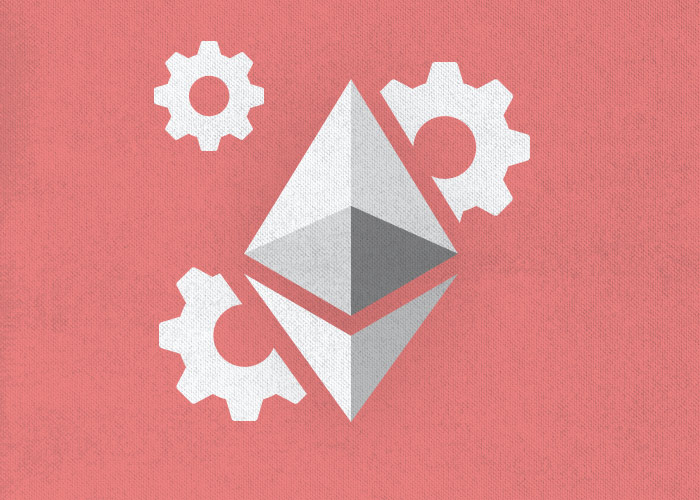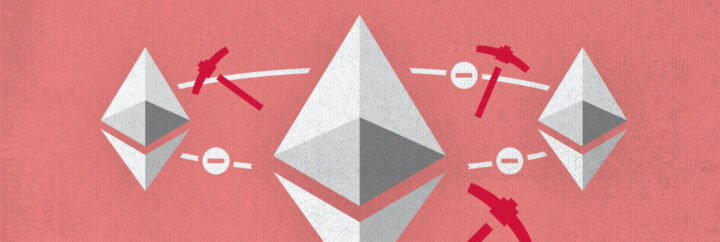Ethereum’s Upgrade: Pros & Cons

The entire crypto market is frozen in anticipation of a major Ethereum update called The Merge, scheduled for September 2022. So, what is it, and why do we need it? Let’s figure it out together.
The Merge is the name of an update during which the whole Ethereum network will switch from the Proof-of-Work consensus algorithm to Proof-of-Stake. And it’s a huge deal. Consensus algorithms can seem like some kind of sci-fi mumbo jumbo to someone with no understanding of cryptocurrency, but we’re not going to be covering the basics today.
Here’s what’s important to know:
- The current version of the blockchain runs on Proof-of-Work (PoW). This imposes certain limitations on the network, and keeping the network operating on PoW isn’t sustainable.
- Switching to Proof-of-Stake (PoS) will solve the main problem — network sustainability. It’ll lay the foundations for the project’s future development.
- The Merge is the first stage, followed by four more steps, which are set to transform Ethereum beyond recognition.
It’s hard to overestimate the importance of The Merge because the Ethereum team has been working on it for over two years. The project’s future will directly depend on The Merge’s success. The update involves several positive and potentially negative factors.
Let’s start with the positive factors:

- New coin issuance will be reduced to 500,000 ETH per year (-90%). The decrease in supply for the same demand will increase the price, an important benefit of the whole renewal. So far, lots of new tokens are being poured into the market daily, boosting supply, which keeps ETH from rising.
- Ethereum coins are constantly being burned: 2.35 million ETH were burned over the last year. This is done to regulate the amount of supply in the market, and if the burning continues at the same rate, ETH will become deflationary and shrink by 2% per year. By comparison, the current inflation rate is 2%. This figure doesn’t seem that impressive in black and white, however, it’s a huge difference in reality.
- ETH will become more attractive to institutional investors. Thanks to staking, they’ll get a different perspective of the asset and be able to value it as a bond. In other words, it’ll generate income by participating in the operation of the network. Given the profits from commissions on the Ethereum network, this income could be up to 15% per annum, which is very high.
- PoS is much greener, which fits perfectly with the current ecological agenda and deprives competitors of an important lever of political pressure. PoS reduces up to 99% of negative emissions compared to PoW. This factor is among the top three arguments raised by crypto opponents.
The negative factors:

- The threat to decentralization, which is the central ideological aspect of cryptocurrency. There is still a risk of a critical bug being discovered. Of course, developers take this into account and are doing everything possible to avoid it. After all, this update has been in the works for several years for a reason. Nevertheless, we should always keep this risk in mind.
- The second point is the same as the first, but it poses a risk for the ETH exchange rate after the update. This risk is also related to the Lido Finance liquid staking protocol, which has been running for several years. Many people have staked their ETH there at higher interest rates. Those who invested coins have already accumulated over 400% of unrealized gains since the very beginning. In the current market situation, they can pour it all into the market as soon as the funds are unlocked. After all, they’ve been lying there for a few years now.On the other hand, it won’t be possible to do this immediately after the update. The funds won’t be unlocked until after a separate upgrade six months after The Merge. But it’s still a very serious factor influencing the price.
- Miners. They have huge farms of tens of thousands of video cards. They have enormous amounts of mined ETH under their control. Many of them hoard it, selling only the portion that was spent on maintenance (electricity, space, taxes, and repairs). Instead of a 30-50% annual return on invested capital, they’re being offered to stake ETH at 4-15% per annum after the upgrade. This is not profitable for them, and there are already rumors about creating PoW-based forks. Additionally, the entire ETH mined over several years can quickly go on sale during peaks, which is also a huge pressure lever on the price.










